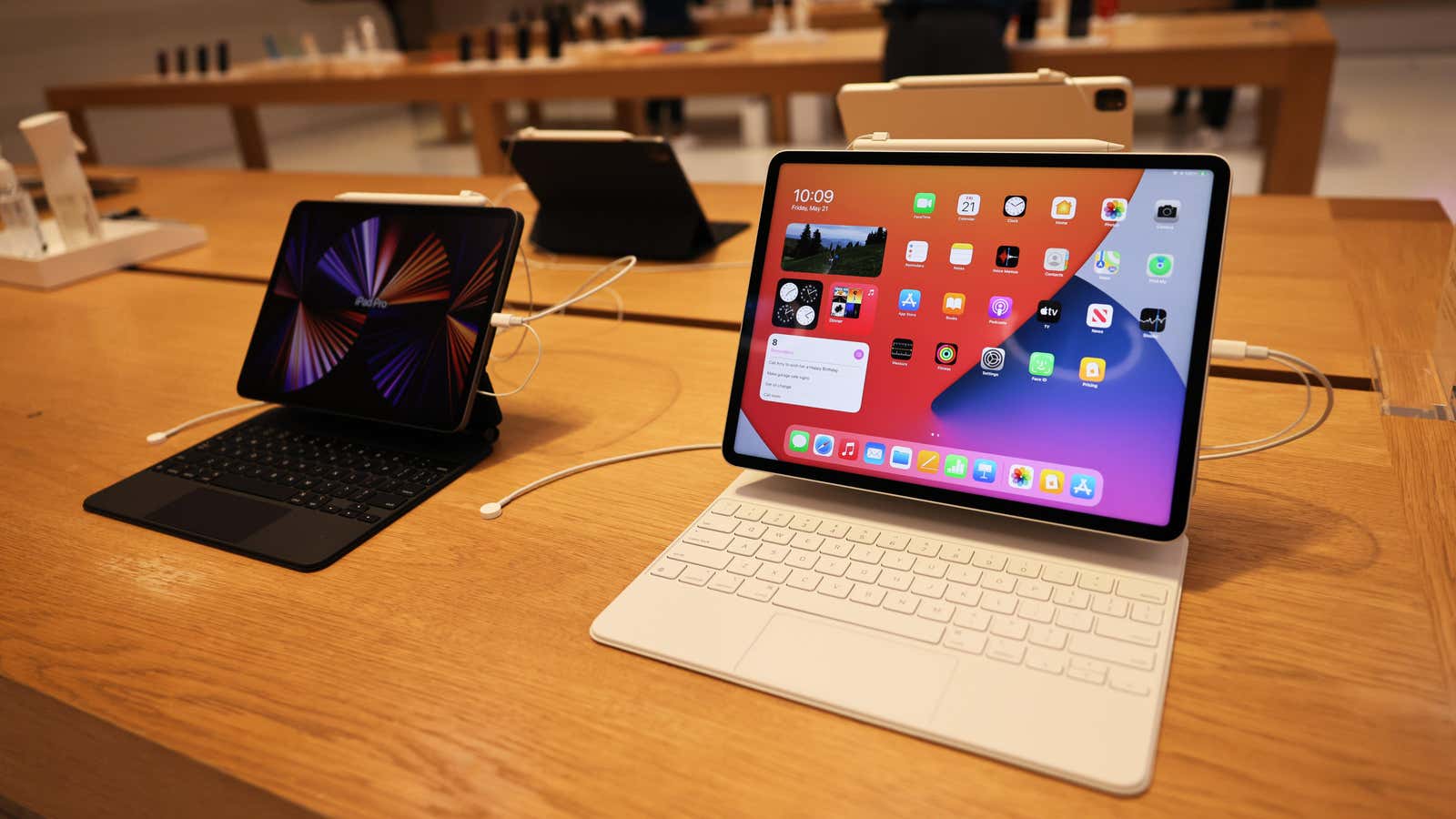Why the IPad Pro Isn’t Worth the Extra Money

Now Apple has added its top-of-the-line Apple Silicon M1 chip for the 13-inch MacBook Air to the $599 entry-level iPad Air, which begs the question: now that the iPad Air has the same chip as the 11-inch iPad Pro, there is so many other similarities, is it really worth spending the extra $200 on an iPad Pro?
What iPad Air 5 and 11-inch iPad Pro have in common
First, let’s talk about the similarities between the new iPad Air and iPad Pro. The 2020 update for the iPad Air brought the same design language as the iPad Pro, which means no home button, thin bezels, and more importantly, support for accessories like the second generation Apple Pencil, Magic Keyboard, and Smart Keyboard.
iPad Air now also supports 5G (but not mmWave). The front camera has a Center Stage feature that ensures you are in the frame and in the center no matter how much you move.
When it comes to the display, it’s pretty much the same. You get True Tone, anti-glare, and a P3 color display.
What You Get for the Extra $200 on an iPad Pro
That said, an extra $200 on an iPad Pro will get you some good. First, the iPad Pro supports Face ID, which the iPad Air doesn’t have. Instead, the iPad Air has a Touch ID sensor built into the power button.
And while visually the display is almost the same, the iPad Air doesn’t have a high refresh rate ProMotion display. This means you don’t need a 120Hz dynamic display. The display has a brightness of up to 600 nits, while the iPad Air only supports 500 nits.
The iPad Pro takes camera setup to a whole new level. You get access to a dual camera system (wide and ultra-wide sensors) along with lidar support. On the iPad Air, you get a single 12-megapixel sensor.
The iPad Pro also has a better port. While they’re both USB-C, the iPad Pro has a Thunderbolt/USB 4 port that has a whopping 40Gbps of bandwidth. On the other hand, the iPad Air has a USB 3.1 Gen 2 port with 10Gbps bandwidth.
It may depend on how much memory you really need.
When you pay $200 more for the starting price, you also get more storage space. The $799 iPad Pro starts with 128GB of storage, while the $599 iPad Air has just 64GB of storage, too little for 2022.
Memory actually matters a lot when buying a new tablet, and we recommend that you upgrade your memory if you’re buying an iPad Air. The 256GB version will set you back $749. That’s where things get fuzzy, because you’re now only $50 away from buying an iPad Pro with 128GB of storage.
Secondly, the iPad Air has 256 GB of internal memory. Whether you need 512GB or 2TB storage, you have no choice but to buy an iPad Pro (and pay exorbitant prices to Apple – the 2TB version costs $1,899).
Why the iPad Air is still the best option for most users
Despite all that has been said and done, we still believe that the iPad Air tablet is enough for most users in most cases. If you can do with 64 GB of storage, even better. Just buy the base model for $599 and spend the extra cash on an Apple Pencil or Smart Keyboard.
iPad Air is also available in five vibrant colors not found on the iPad Pro: space gray, starlight, pink, purple, and blue.
Buy an iPad Pro only if…
Now that the iPad Air is so good, the iPad Pro has become a tablet of last resort. Of course, there is still a market for it, and if you have some very specific needs, nothing more than an iPad Pro will suffice. But you should only choose the iPad Pro if you absolutely need the following features:
- Face ID
- Over 256 GB storage
- Thunderbolt/USB 4 port
- ProMotion Display
If you don’t need it, buy an iPad Air.